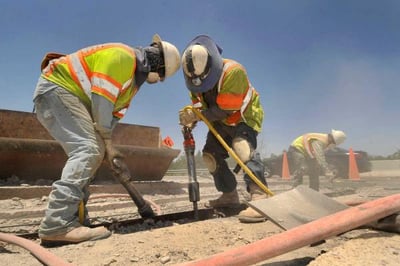Almost all businesses enter into numerous contractual agreements each year. These agreements are often given the same cursory review as an iTunes Agreement. Failure to closely scrutinize the details of these agreements can adversely impact the business’s total cost of risk in the event of a problem.
The provision within the contract that impacts the business’s cost of risk more so than any other, especially in construction, is the Indemnification Agreement. The Indemnification Agreement is a basic contractual device used to transfer risk from one party to another.

In any construction contract, one party (the "indemnitor") agrees to indemnify, or pay damages on behalf of the other party (the "indemnitee") from the liabilities associated with the hazards of the construction project. By virtue of the agreement, the indemnitor assumes the liability of the indemnitee. It is important to note that indemnification provisions are not limited between the owner and the contractor and are usually included in most subcontracts as well. This makes the subcontractor the indemnitor who agrees to save and hold harmless the general contractor (the indemnitee) and, usually, the owner.
There are three basic types of indemnities. From an insurance perspective, the indemnities are broken down into limited form, intermediate form, and broad form.
- Limited Form Indemnity – A limited form indemnity merely states that the indemnitor will hold harmless and indemnify the indemnitee for the consequences of the indemnitor’s negligence. The typical limited form indemnification provision in a contract would provide that "contractor agrees to save and hold the owner harmless from all claims, damages, losses, and liabilities arising out of contractor's work, but only to the extent caused by the negligence of contractor."
- Intermediate Form Indemnity – An intermediate form indemnity requires the indemnitor to hold harmless and indemnify the indemnitee for anything and everything except the indemnitee’s sole negligence. A typical hold harmless clause of the intermediate type would provide that "contractor shall save and hold the owner harmless from any and all claims, losses, damages, and liabilities arising out of contractor’s work, unless said claims, losses, damages, and liabilities arise out of the sole negligence of owner."
- Broad Form Indemnity – Of the three types of client drafted indemnities, the broad form creates the most problems. A broad form indemnity requires the indemnitor to hold harmless and indemnify the indemnitee for anything and everything, including the indemnitee’s sole negligence. Essentially, the indemnitor has assumed an unqualified obligation to hold the indemnitee harmless for any and all liabilities arising out of the project, regardless of which party was actually at fault even if the damages, injury, or claim is due to the sole negligence of the indemnitee. This form of indemnity is illegal in 45 states, but is still legal in Wisconsin.
Contractual risk transfer is a critical component of effective risk management, but whether one is transferring the risk or assuming it, the exposure needs to be understood as not all indemnification clauses are covered under your insurance contract. As all insurance policies differ in their language, it is vitally important to understand whether or not the contract exposures you are signing are insurable. Time taken on the front end of the contract review process to negotiate equitable terms can yield substantial returns on the back side in the event of a problem.
Please contact a Hausmann-Johnson Construction Group Specialist for more information.
If you're interested in a closer look at construction contracts, register for our webinar: Examining Common Pitfalls in Construction Contracts


COMMENTS